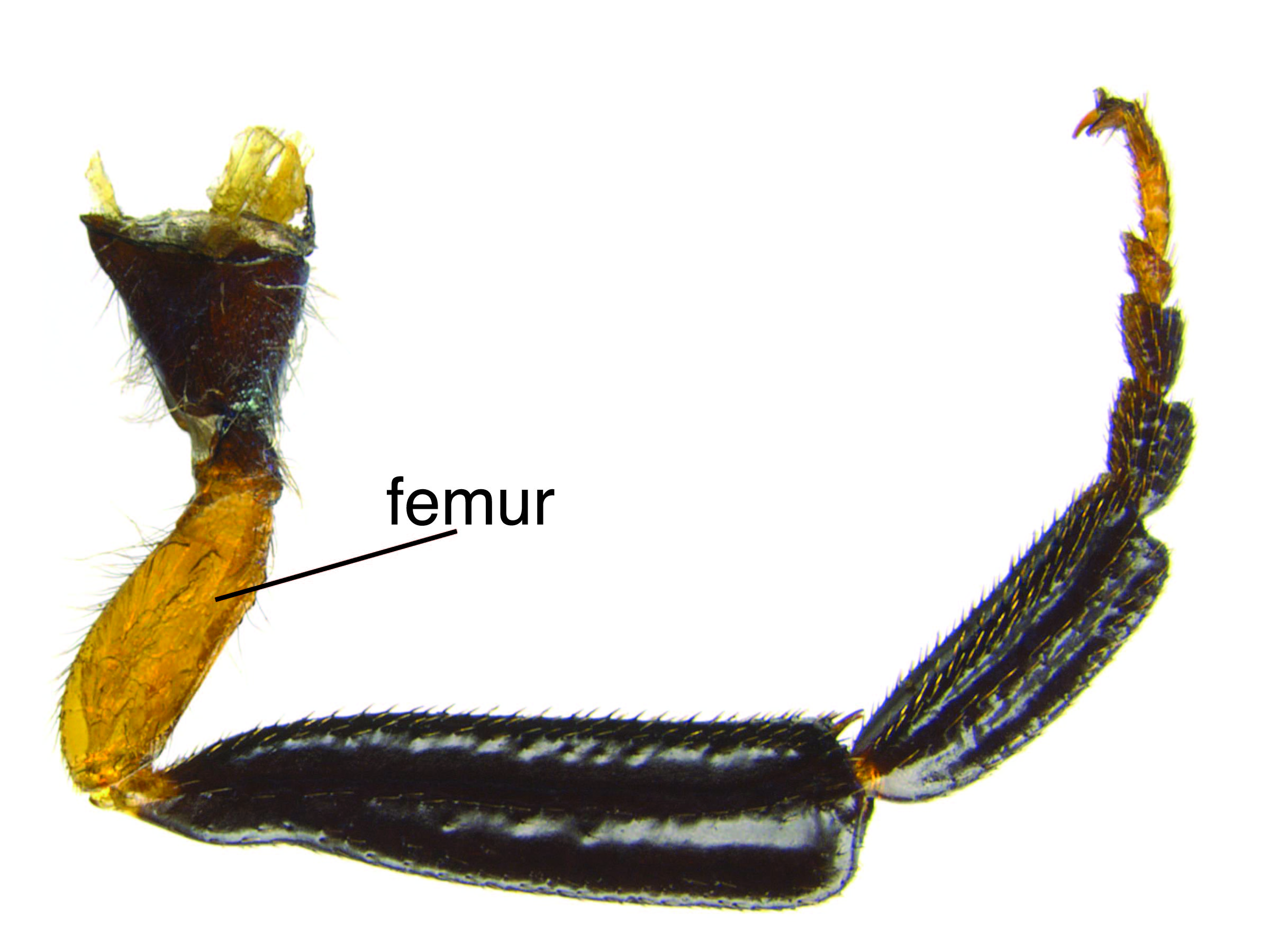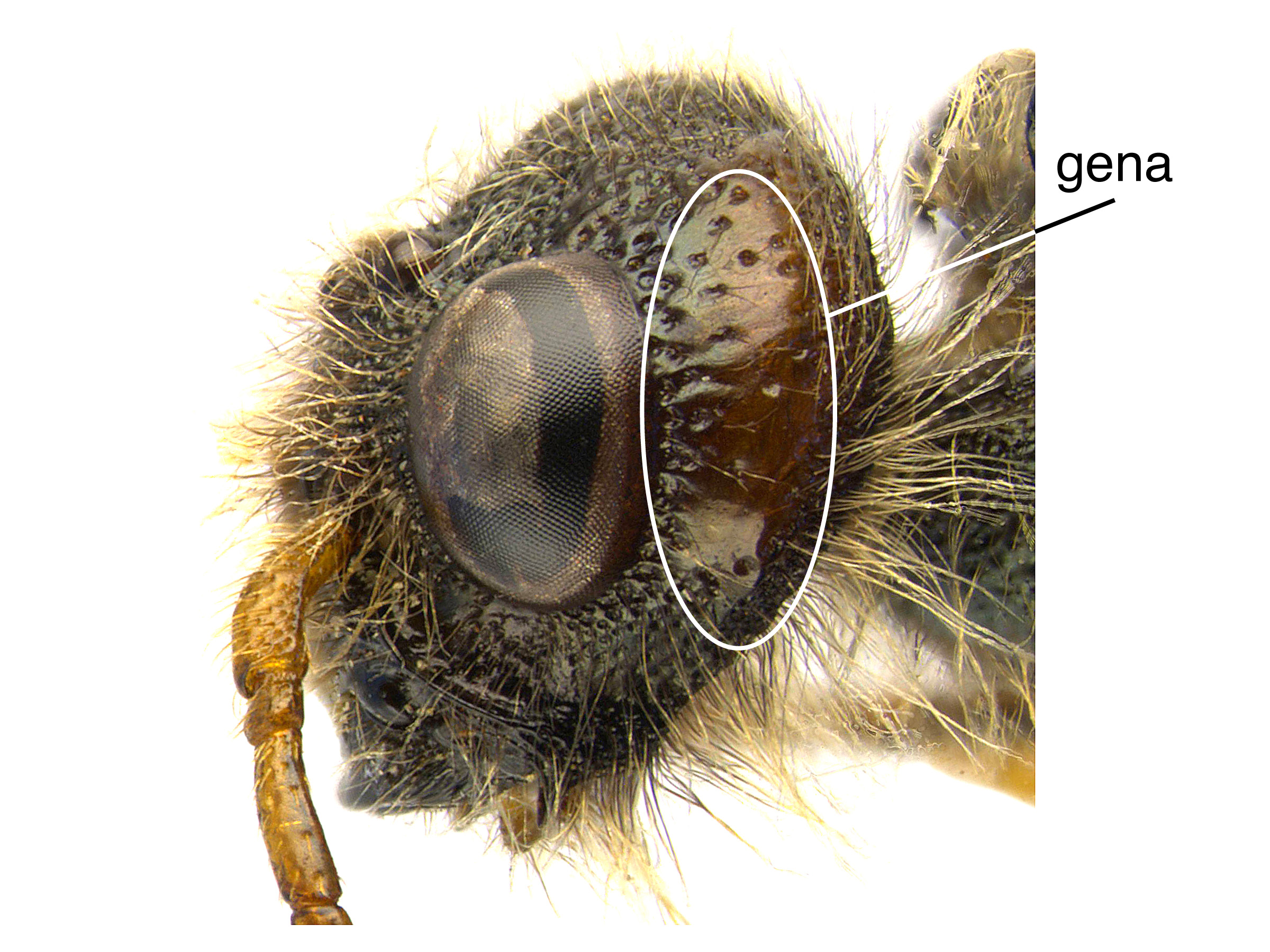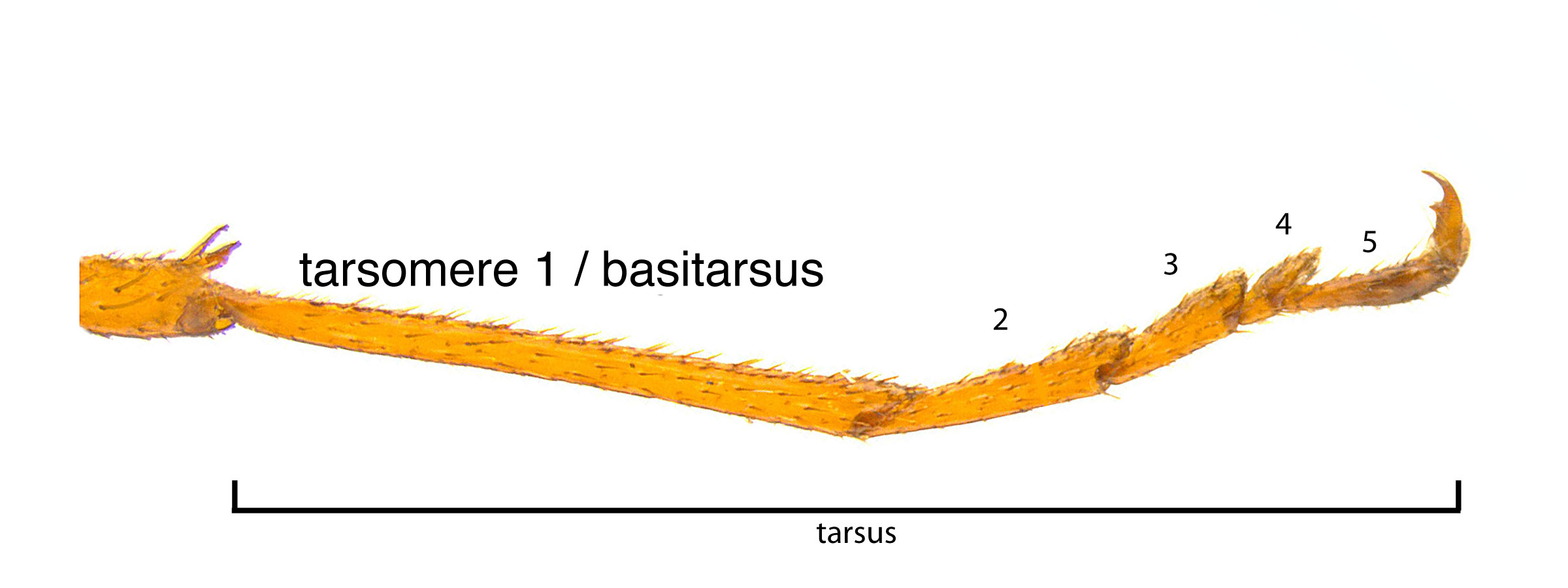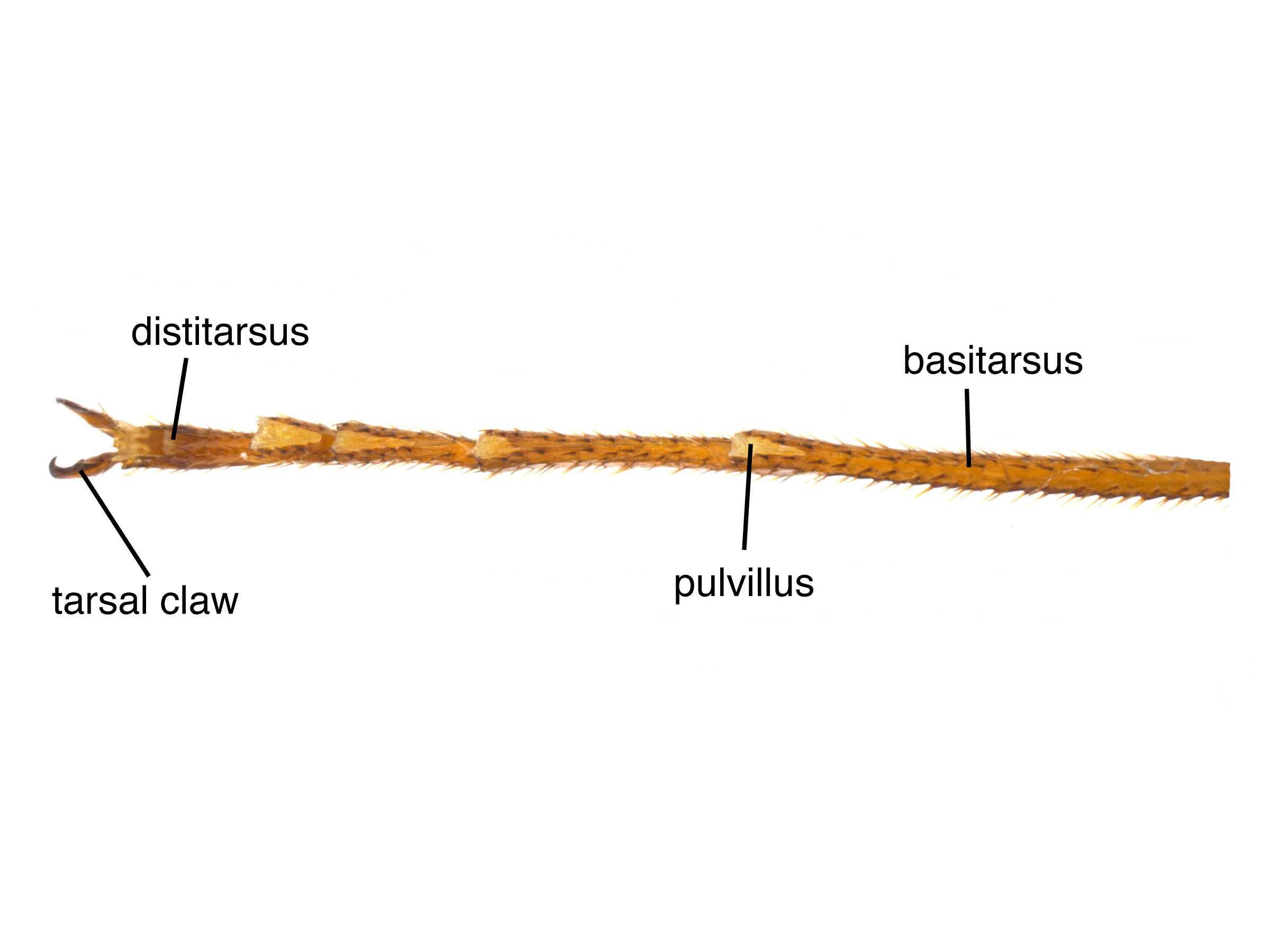Family: Siricidae
Subfamily: Siricinae
Genus: Sirex Linnaeus, 1760
Species: Sirex hispaniola Goulet, 2012
Common names: none
Sirex hispaniola is a rare species known only from a single specimen from the island of Hispaniola. The female has a mostly red abdomenabdomen:
the third and last segment of an insect's body; in sawflies this is usually made up of 11 segments (segments 9 and 10 often fused) and the male is unknown (Schiff et al. 2012Schiff et al. 2012:
and the male is unknown (Schiff et al. 2012Schiff et al. 2012:
Schiff NM, Goulet H, Smith DR, Boudreault C, Wilson AD, and Scheffler BE. 2012. Siricidae (Hymenoptera: Symphyta: Siricoidea) of the Western Hemisphere. Canadian Journal of Arthropod Identification 21: 1-305.).
See Sirex for genus-level diagnostic characteristics.
The male for this species is not known.
Females:
 reddish-brown (Schiff et al. 2012Schiff et al. 2012:
reddish-brown (Schiff et al. 2012Schiff et al. 2012: and vertexvertex:
and vertexvertex: and vertexvertex:
and vertexvertex: length 1.7 times width (Schiff et al. 2012Schiff et al. 2012:
length 1.7 times width (Schiff et al. 2012Schiff et al. 2012:Sirex hispaniola can be distinguished from S. nigricornis’ pale form by the length of the second hind tarsomeretarsomere:
a segment of the tarsus
 and the relative length of the second hind pulvilluspulvillus:
and the relative length of the second hind pulvilluspulvillus:
soft pads used for surface adhesion, located in sawflies on the first 4 segments of the tarsus
 (Schiff et al. 2012Schiff et al. 2012:
(Schiff et al. 2012Schiff et al. 2012:
Schiff NM, Goulet H, Smith DR, Boudreault C, Wilson AD, and Scheffler BE. 2012. Siricidae (Hymenoptera: Symphyta: Siricoidea) of the Western Hemisphere. Canadian Journal of Arthropod Identification 21: 1-305.).
none recorded
Hosts for Sirex hispaniola are unknown. Based on morphological characters, Schiff et al. (2012) hypothesize that the host is Pinus spp. (pine).
Female Sirex harbor symbiotic basidiomycete fungus in abdominal glands called mycangia. During oviposition, the site is inoculated with the fungus, which begins to decompose the surrounding wood. LarvaeLarva:
the immature stage of holometabolous insects
 feed on the fungus, and in the process bore galleries through the wood (Johnson 1930Johnson 1930:
feed on the fungus, and in the process bore galleries through the wood (Johnson 1930Johnson 1930:
Johnson CW. 1930. On the variation and abundance of Sirex nitidus Harris. Psyche 37 (3): 281-282. https://doi.org/10.1155/1930/62786, Schiff et al. 2012Schiff et al. 2012:
Schiff NM, Goulet H, Smith DR, Boudreault C, Wilson AD, and Scheffler BE. 2012. Siricidae (Hymenoptera: Symphyta: Siricoidea) of the Western Hemisphere. Canadian Journal of Arthropod Identification 21: 1-305.).
Larvae are creamy white and grub-like in appearance with a dark head capsule. As with adults, larvaelarva:
the immature stage of holometabolous insects
 possess a short dorsaldorsal:
possess a short dorsaldorsal:
of or on the top surface of the body or structure
horn on the posterior end of the body. The larvaelarva:
the immature stage of holometabolous insects
 bore galleries into wood, feeding until pupation and subsequent emergence. Throughout this process, the larvaelarva:
bore galleries into wood, feeding until pupation and subsequent emergence. Throughout this process, the larvaelarva:
the immature stage of holometabolous insects
 use their horn to pack the tunnel behind them with sawdust. Emergence holes are perfectly circular. The fungal symbiont is carried in specialized organs in female larvaelarva:
use their horn to pack the tunnel behind them with sawdust. Emergence holes are perfectly circular. The fungal symbiont is carried in specialized organs in female larvaelarva:
the immature stage of holometabolous insects
 that develop into the mycangia after metamorphosis (Schiff et al. 2012Schiff et al. 2012:
that develop into the mycangia after metamorphosis (Schiff et al. 2012Schiff et al. 2012:
Schiff NM, Goulet H, Smith DR, Boudreault C, Wilson AD, and Scheffler BE. 2012. Siricidae (Hymenoptera: Symphyta: Siricoidea) of the Western Hemisphere. Canadian Journal of Arthropod Identification 21: 1-305.).
The specific biology of S. hispaniola is unknown. The single captured specimen was found in mid-July (Schiff et al. 2012Schiff et al. 2012:
Schiff NM, Goulet H, Smith DR, Boudreault C, Wilson AD, and Scheffler BE. 2012. Siricidae (Hymenoptera: Symphyta: Siricoidea) of the Western Hemisphere. Canadian Journal of Arthropod Identification 21: 1-305.).
World: North America
North America: The single female specimen of S. hispaniola was found in Reserva Ebano Verde of the Cordillera Central of the Dominican Republic (Schiff et al. 2012Schiff et al. 2012:
Schiff NM, Goulet H, Smith DR, Boudreault C, Wilson AD, and Scheffler BE. 2012. Siricidae (Hymenoptera: Symphyta: Siricoidea) of the Western Hemisphere. Canadian Journal of Arthropod Identification 21: 1-305.).
No specific locality data was available for mapping the range of this species at the time of publication.